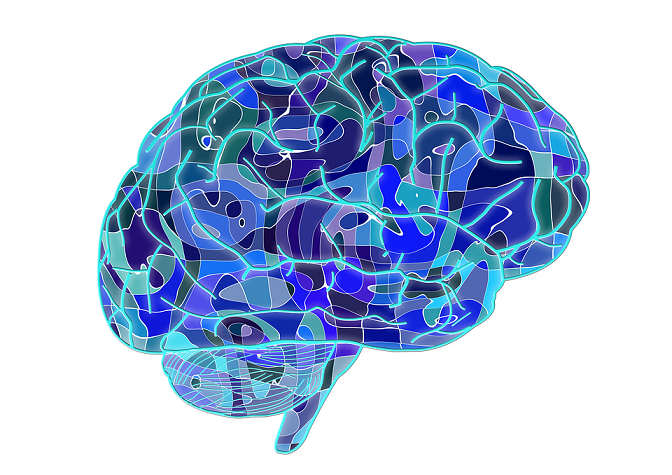As promised: Neuro 101
To start the series of posts on neuroscience, dementia and other related topics, I think it is convenient to open with a brief review about the nervous system and how it works, so let’s begin with the ABC:

The nervous system is a set structures and cells responsible of coordinating and controlling organic functions, by receiving and processing internal and external signals, to generate quick responses (MSD, 2018).
Its structure is build up on a hierarchical network. Its basic unit is called the neuron, which is a specialized cell that receives, sends and stores information through electro-chemical signals. The human brain contains approximately 100 billion neurons (NIH, nd).

Neurons have a large cell body and two types of fibers:
Axon: elongated extension that sends messages in the form of electrical impulses.
Dendrites: numerous branches that receive nervous impulses.
The process of electrochemical exchange between neurons is called synapses. The synapse is generated at the points of contact between the neurons; a neuron sends an electrical signal through its axon. At the end of the axon, the electrical signal becomes a chemical signal that is secreted in small quantities (NIH, society for neuroscience, 2013).

These chemical signals are called neurotransmitters, and they act as messengers that reach the dendrites of the contiguous neuron to indicate that they must open or close certain ion channels, so that an electrical impulse is produced. The different types of nerves use different neurotransmitters to send impulses (MSD, 2018).
There are also other types of cells that work as support, called glial cells, which include astrocytes (provide nutrients and control the chemical composition of neurons), oligodendrocytes (cells that produce myelin, the substance that isolates axons like the envelope of a cable, to accelerate electrical conduction), glial progenitor cells (which produce new astrocytes and oligodendrocytes) and microglia (protect the encephalon from infections and eliminate dead cells), (MSD, 2018; Jäkel and Dimou, 2017).

Neurons make up the complex network that we call the nervous system. And we will know more about its parts in a next post.
Today’s mandatory cat is courtesy of 9gag.com:

(https://9gag.com/gag/aZ3pxAQ)
Lo prometido es deuda: Neuro 101
Para iniciar la serie de posts sobre neurociencia, demencias y otros temas relacionados, creo que es conveniente abrir con un breve recuento de qué es y cómo funciona el sistema nervioso, así que comencemos con el ABC:
El sistema nervioso es el conjunto de células y estructuras responsables de coordinar y controlar las funciones orgánicas, al recibir y procesar las señales internas y externas del cuerpo, para generar respuestas, de forma rápida (MSD, 2018).
Su estructura está conformada por una red jerarquizada. Su unidad básica es la neurona, que es una célula especializada en recibir, enviar y almacenar información a través de señales electro-químicas. El cerebro humano contiene aproximadamente 100 mil millones de neuronas (NIH, sf).
Las neuronas están constituidas por un cuerpo celular grande y dos tipos de fibras nerviosas:
Axón: prolongación alargada que envía mensajes en forma de impulsos eléctricos.
Dendritas: numerosas ramificaciones receptoras de impulsos nerviosos.
El proceso de intercambio electroquímico entre neuronas se llama Sinapsis. La sinapsis, se genera en los puntos de contacto entre las neuronas; una neurona envía una señal eléctrica a través de su axón. Al final del axón, la señal eléctrica se convierte en una señal química que éste secreta en pequeñas cantidades (NIH, sf; Sociedad para la neurociencia, 2013).
Estas sustancias químicas se denominan neurotransmisores, y actúan como mensajeros que llegan a las dendritas de la neurona contigua para indicarle que debe abrir o cerrar determinados canales iónicos, de modo que se produzca un impulso eléctrico. Los distintos tipos de nervios utilizan diferentes neurotransmisores para transmitir los impulsos a través de las sinapsis (MSD, 2018).
También existen otros tipos de células como las células de sostén llamadas células gliales, que incluyen los astrocitos (proporcionan nutrientes y controlan la composición química de las neuronas), los oligodendrocitos (células que producen mielina, la sustancia que aísla los axones como la envoltura de un cable para acelerar la conducción eléctrica), las células progenitoras gliales (que producen nuevos astrocitos y oligodendrocitos) y la microglía (protegen al encéfalo de infecciones y eliminan células muertas), (MSD, 2018; Jäkel y Dimou, 2017).
Las neuronas conforman la compleja red que llamamos sistema nervioso. Y conoceremos más sobre sus partes en un próximo post.
Gato del día, cortesía de 9gag.com
Referencias:
MSD. (2018) Merck Sharp & Dohme Corp:Manual MSD. Extraído de: http://www.msdmanuals.com/es-ve/hogar/enfermedades-cerebrales,-medulares-y-nerviosas
Sociedad para la Neurociencia. (2013). What is Neuroscience? Extraído de: http://www.sfn.org/index.aspx?pagename=whatIsNeuroscience
NIH. (Sf). Neurociencia. Extraído de: https://www1.nichd.nih.gov/espanol/salud/temas/neuro/informacion/Pages/partes.aspx
Jäkel, S., Dimou, L. (2017). Glial Cells and Their Function in the Adult Brain: A Journey through the History of Their Ablation. Front Cell Neurosci. 2017; 11: 24. Extraído de: https://www.ncbi.nlm.nih.gov/pmc/articles/PMC5303749/
Congratulations @jiseru! You received a personal award!
Happy Birthday! - You are on the Steem blockchain for 1 year!
Click here to view your Board
Congratulations @jiseru! You received a personal award!
You can view your badges on your Steem Board and compare to others on the Steem Ranking
Vote for @Steemitboard as a witness to get one more award and increased upvotes!